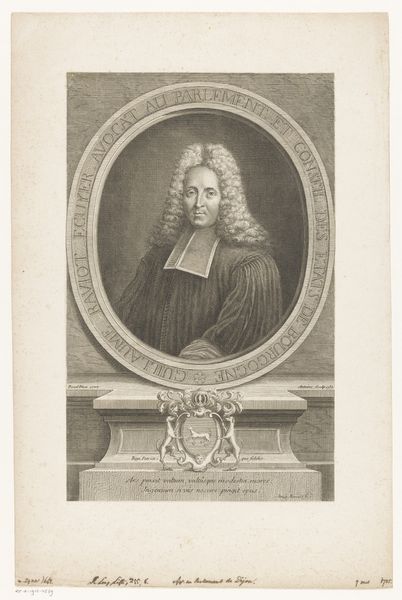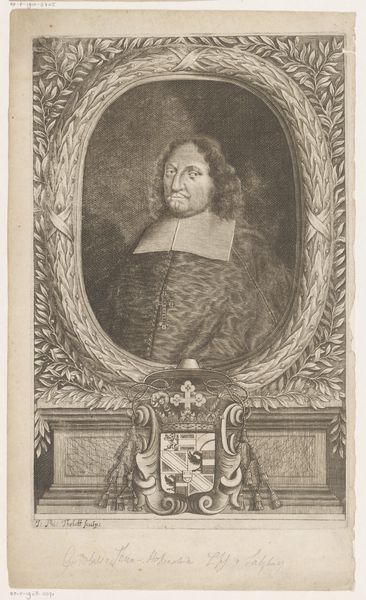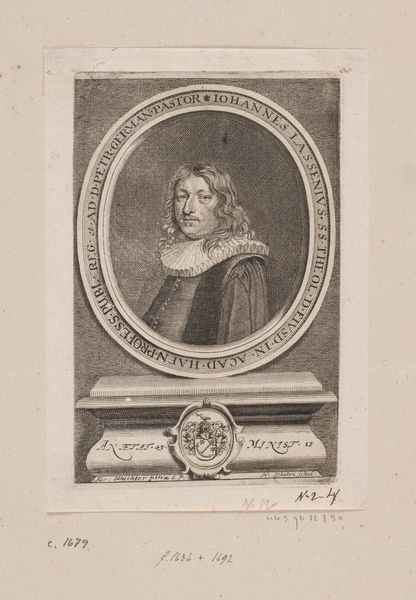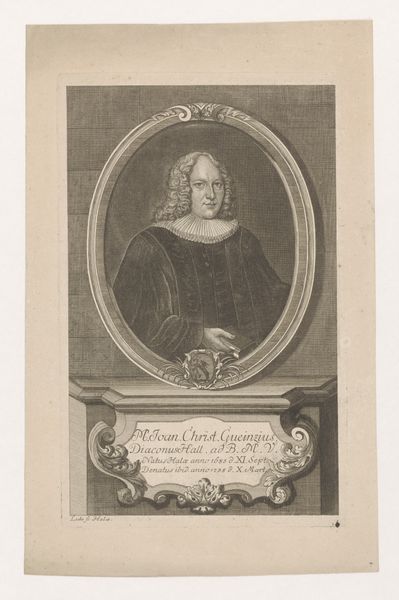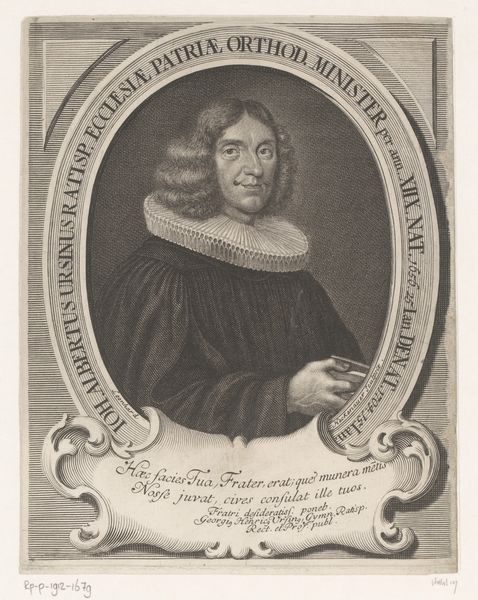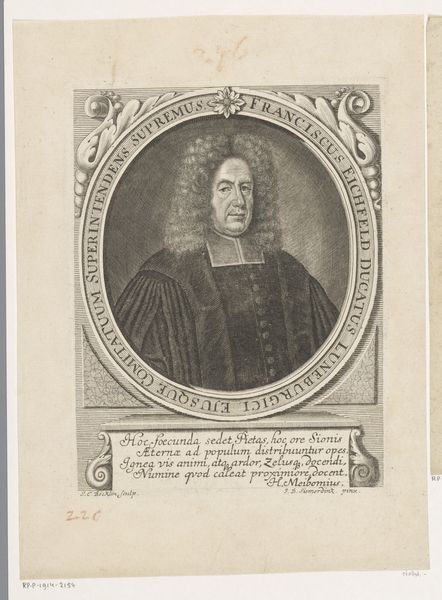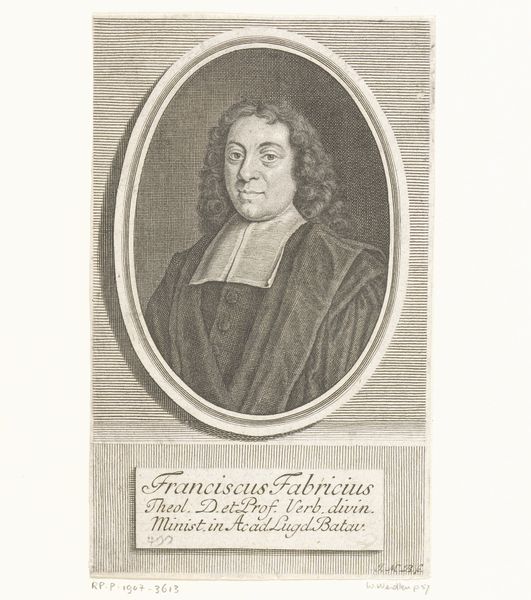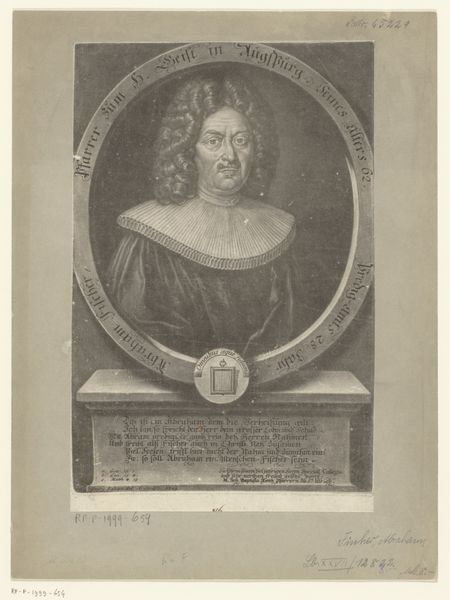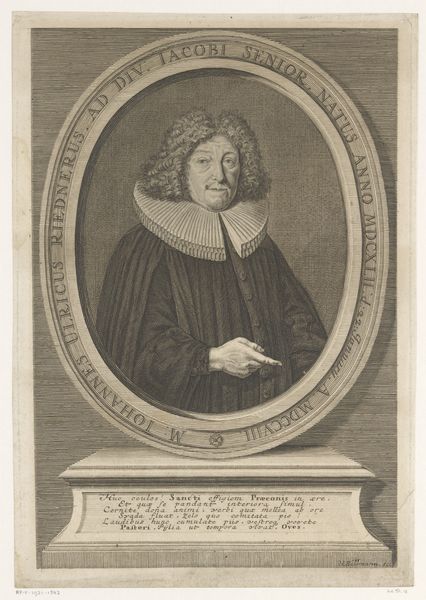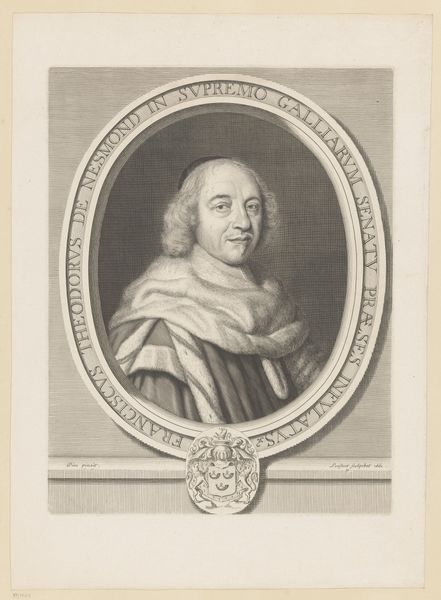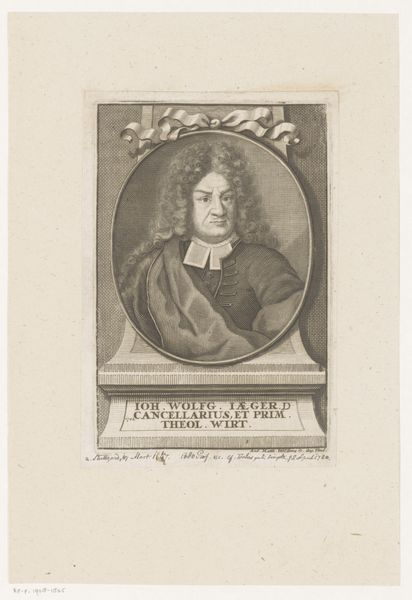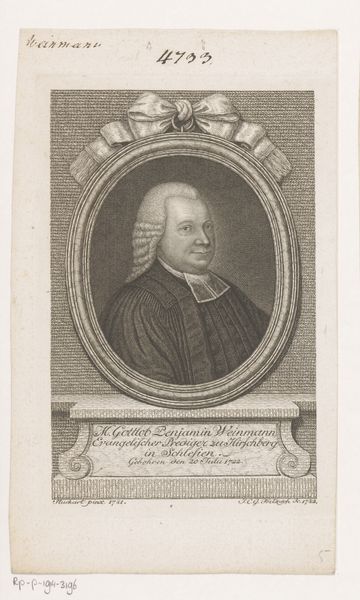
Dimensions: height 225 mm, width 179 mm
Copyright: Rijks Museum: Open Domain
This is a portrait of Hans Johann Jakob Faber, made in 1776 by Johann Christian Gottfried Fritzsch, using engraving. The printmaking process transforms Faber into a repeatable image, much like the products of a factory. Look closely, and you can see how the lines create shading and texture, transforming Faber into an object of public display, and, in a way, consumption. The act of engraving, a laborious process of incising lines onto a metal plate, mirrors the era’s increasing emphasis on labor and production. The fine detail suggests precision and control, qualities valued in the burgeoning industrial age. Notice the sharp lines and clear depiction of Faber's attire, highlighting the status and material wealth of the sitter. The contrast between light and shadow, achieved through careful arrangement of lines, gives the portrait depth and substance, reflecting the subject's social standing. By understanding the methods used to create this portrait, we see how art, like craft, is deeply intertwined with the social and economic conditions of its time.
Comments
No comments
Be the first to comment and join the conversation on the ultimate creative platform.

